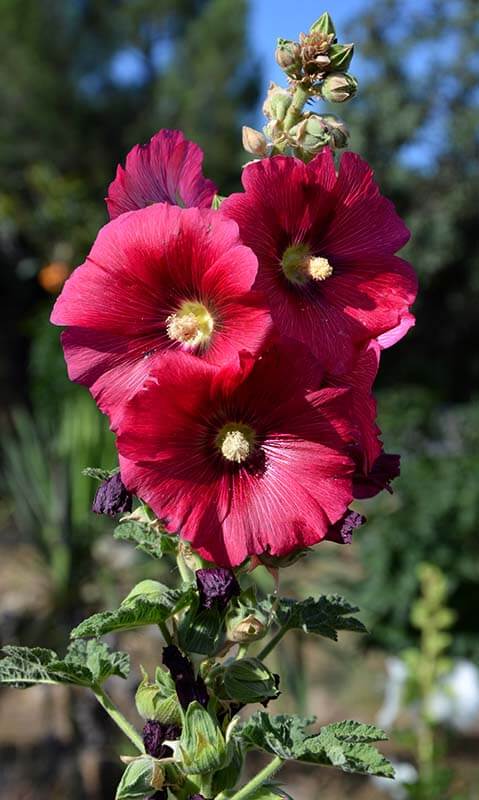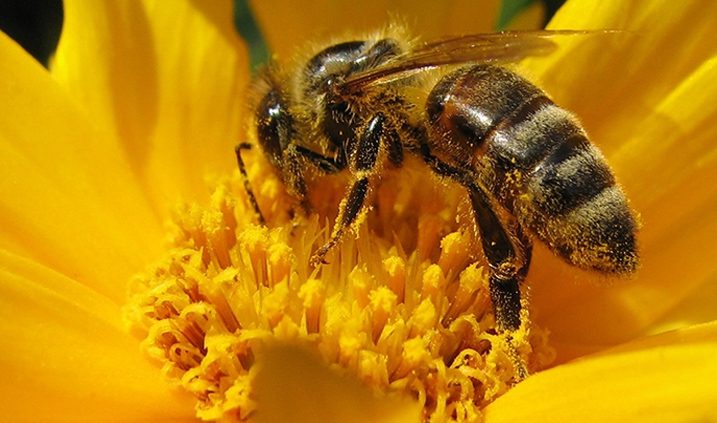History, bees and pollination
Honeybees are the pollinators of one third of all plant foods consumed worldwide. More than 80% of the plants grown for food, around 400 species need bees and other pollinators in order to be fertilised. Apart from pollinating our agricultural crops, bees play a fundamental role in maintaining the earth’s natural ecosystem, pollinating wild flowers as well. Consequently, we sumarize interesting information about pollination. Furthermore, not forgetting the sweet honey they give us.
Index:
|
Summary: Curious facts about bees, honey and other curiosities. You can also find a fantastic selection of Spanish honeys in our shop in Las Rozas de Madrid: orange blossom, eucalyptus, arbutus, thyme…
Other interesting articles: Where to buy quality honey?
1. Importance of bees in pollination
Honeybees are the pollinators of one third of all plant foods consumed worldwide. They pollinate more than 80% of the plants grown for food and around 400 cultivated species. Apart from pollinating our agricultural crops, bees and other pollinators play a vital role in maintaining the earth’s natural ecosystem by pollinating wild flowers as well.
If we quantify this monetarily, bees contribute an estimated $170 billion to the global economy each year. This does not take into account the fundamental work they provide to the earth’s ecosystem.

Photo 1: Flowers of the red royal mallow
Bees play a vital role in maintaining the global ecosystem, pollinating about 90% of the world’s wild flora. The pollination of flora results in the seeds, fruits and wild fruits that feed a huge variety of birds and mammals on earth. Bees are therefore an essential part of the chain of life and biodiversity of species.
There are about 2 000 species of wild bees in Europe, but only 2% of them pollinate 80% of the agricultural crops that require pollination. Most bee species are solitary and many are adapted to pollinate only one type of plant. Their life cycle is synchronised with the plant, so they pollinate the plant and feed their brood during the flowering period of the plant.
a) Decline of pollinators
According to Greenpeace, 70% of Spanish agricultural crops are at risk due to the decline of bees and other pollinating insects. Fruits, vegetables and fruit so common in our greengrocers’ shops, such as: kiwis, pumpkins, melons, watermelons, courgettes, apples, peaches, lemons, almonds, etc. could disappear. Also, crops dedicated to livestock feed. In addition, non-edible crops such as cotton would also be at serious risk.
As for the possible extinction of bees, one often reads the apocalyptic mention attributed to Albert Einstein. Although there is no hard evidence for its authorship, it says: “If bees were to disappear from the face of the earth, man would only have 4 years left to live on earth”. In its original language, German (Wenn die Bienen verschwinden, hat der Mensch nur noch vier Jahren zu leben).
Although four years is an exaggeration, considering human ingenuity. Nevertheless, this mention highlights how human survival has been inextricably linked to the work of bees.
b) Early domestication of bees
More than 20 000 years ago, humans took advantage of the work done by bees. This is demonstrated by cave paintings from that time. They show how humans collected honey from their swarms. Also in Ancient Egypt, Egyptians transported their hives across the Nile in order to pollinate their crops. In addition, they buried their pharaohs with containers full of honey so that the pharaohs could take it with them to their afterlife.
In the 15th century, conquerors took their honeybees and moved them for agricultural purposes to the new world, America. Wild bees already existed in America, but not the Apis mellifera bee. From America, honeybees were moved to Australia and Asia, where there were no honeybees either.
2. Pollination and honey
Other insect pollinators of flowers are bumblebees. Although bumblebees are able to pollinate more flowers in a shorter time, bumblebee colonies are much smaller than those of honeybees. A bee colony (hive) usually consists of about 50 000 bees. In comparison, a bumble bee colony usually consists of about 250 bees. Therefore, honey bees are the best insects for pollinating plants.
It should also be noted that pollination of flowers by bumblebees is poorer. For this reason, farmers always want to use bees to pollinate their crops.
In addition, honeybees provide us with honey, propolis, royal jelly and wax.
3. Bee pollinating
The great task performed by bees is the pollination of most of the world’s flowers. A simple task that millions and millions of bees do every day, and which is fundamental. A task that only pecorator bees carry out and which requires them to travel for miles.
In order to learn more about this beautiful process, we leave you a video. Here you can see how a bee collects nectar and pollinates. A simple, meticulous and very beautiful task as you can see.
Sources:
The newspaper The Guardian: http://www.theguardian.com/







Leave a Reply
Want to join the discussion?Feel free to contribute!